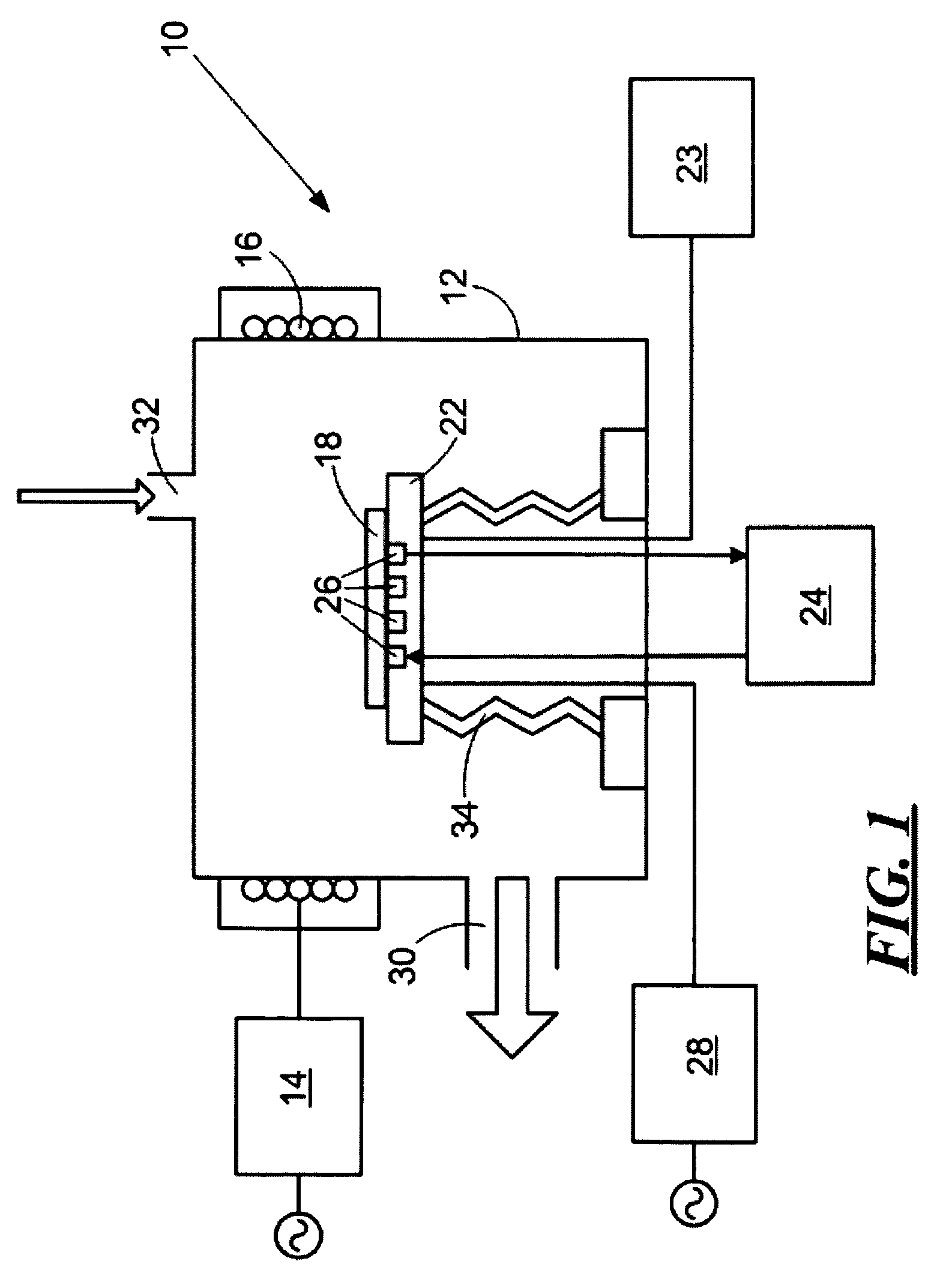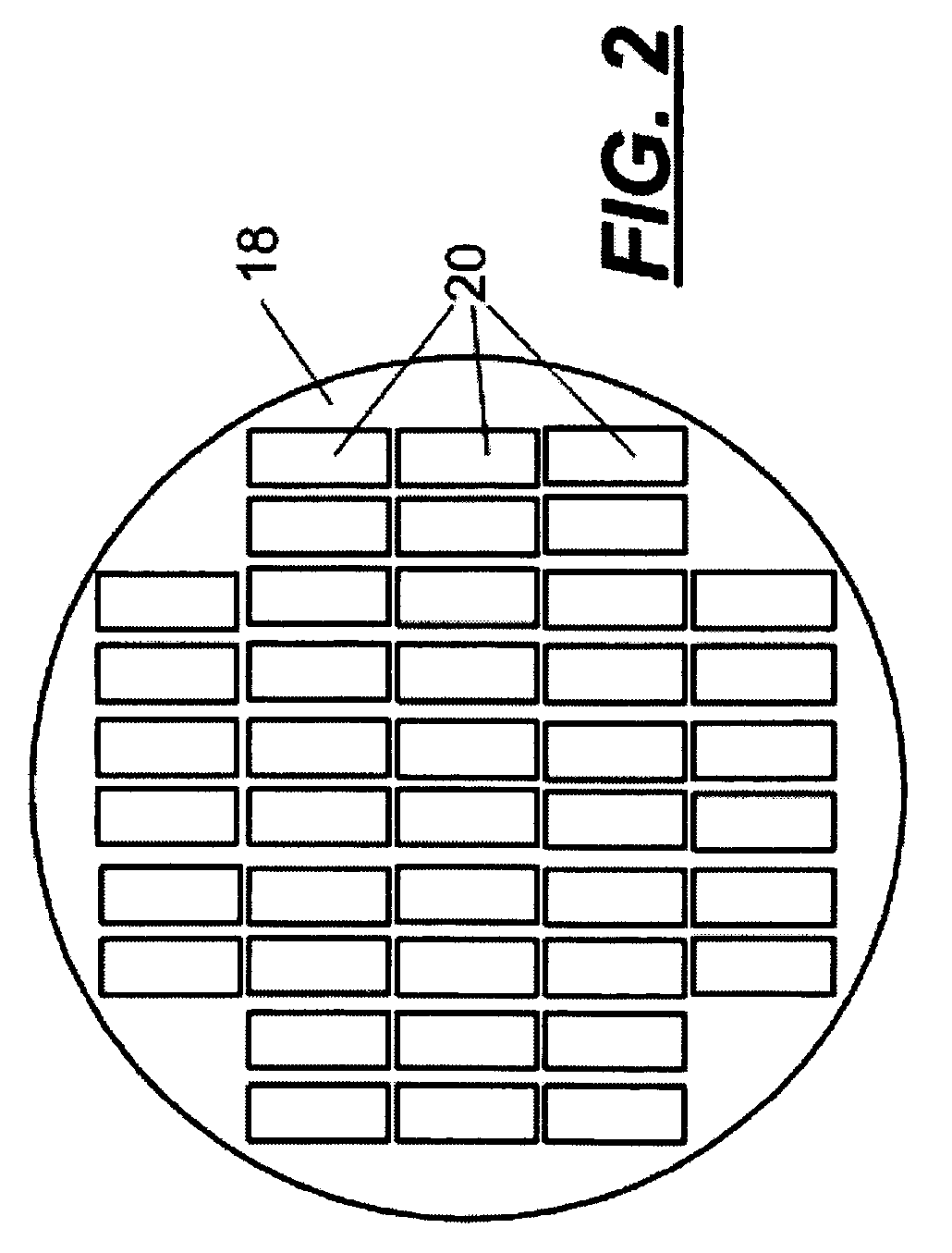Multiple layer etch stop and etching method
a technology of reactive ions and etching stops, which is applied in the field of deep reactive ion etching processes, can solve the problems of difficult to completely remove hard etching stop materials from the back side of the wafer, difficult to adequately clamp and seal the wafer on the clamping disk, and inadequate cooling of the wafer, so as to reduce interference in the flow, increase the resistance to residue formation, and easy to remove substant.
- Summary
- Abstract
- Description
- Claims
- Application Information
AI Technical Summary
Benefits of technology
Problems solved by technology
Method used
Image
Examples
first embodiment
[0037]In a first embodiment, a readily soluble polymeric material such as a positive photoresist material, a polyhydroxy styrene material, a low molecular weight epoxy material, a styrene material, or an acrylate material is coated onto the opposite side 52 of the wafer 18 to serve as the relative soft etch stop layer 54 as shown in FIG. 5B. The soft etch stop layer 54 may be applied by a spin-coat process, a spray coat process, or a lamination process. Next, a hardcoat layer is 56 applied to the soft etch stop layer 54, such as by a method selected from sputtering, chemical vapor deposition (CVD), and spin on coating as shown in FIG. 5C. The hardcoat layer may be selected from, for example, silicon oxide, silicon nitride, silicon carbide or a combination thereof, diamond like carbon (DLC), a metal, a fluoropolymer passivation material deposited in a plasma chamber, for example, plasma deposition using octafluorocyclobutane as the monomer gas. The composite etch stop material 54 / 56 ...
second embodiment
[0039]In the second embodiment, the readily soluble polymeric material is coated onto the wafer 18 first to serve as a soft etch stop layer 54 while the highly cross-linked epoxy resin is coated onto the soft etch stop layer 54 to provide a hard etch stop layer 56. The thickness of the composite etch stop material 54 / 56 is controlled by controlling the weight percent solids in each of the polymer solutions as well as the spin coating speed used to apply the polymeric coatings to the surface 52 of the wafer 18 or to the soft etch stop layer 54. Typically, the composite etch stop material 54 / 56 will have an overall thickness T ranging from about 10 to about 25 microns with the soft etch stop layer 54 having a thickness ranging from about 5 to about 20 microns and the hard etch stop layer having a thickness ranging from about 1 to about 3 microns). In the alternative, the layers 54 and 56 may be selected from other negative or positive photoresist materials applied in a similar manner ...
PUM
 Login to View More
Login to View More Abstract
Description
Claims
Application Information
 Login to View More
Login to View More - R&D
- Intellectual Property
- Life Sciences
- Materials
- Tech Scout
- Unparalleled Data Quality
- Higher Quality Content
- 60% Fewer Hallucinations
Browse by: Latest US Patents, China's latest patents, Technical Efficacy Thesaurus, Application Domain, Technology Topic, Popular Technical Reports.
© 2025 PatSnap. All rights reserved.Legal|Privacy policy|Modern Slavery Act Transparency Statement|Sitemap|About US| Contact US: help@patsnap.com



